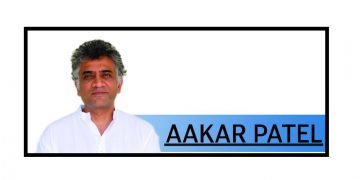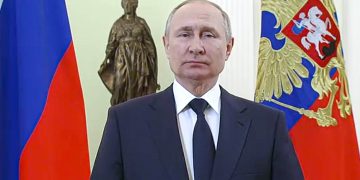Ajit Ranade
The economy shrank by nearly one-fourth during the first three months of this fiscal year. Much of this was due to the harsh lockdown initiated in March. Roughly three-fourths of the economy was practically shut for a month, after which there were a series of renewed lockdowns with partial relaxations. For this quarter, the economy suffered a triple shock, like demand, supply and finance collapsed. Unemployment rose close to 30 per cent in April, rendering nearly 122 million people jobless. In cities, whose workforce consists of 40 per cent migrants on an average, the toll on livelihoods was severe. With the loss of jobs and income, it soon became a food crisis for many urban households, necessitating emergency measures from state governments. The Central government’s initial relief package was to enhance food security by doubling the rations and extending this up to November.
The big 20-lakh-crore package announced by the Central government in May consisted largely of liquidity support. For instance, micro, small and medium enterprises are eligible to guaranteed loans up to Rs 3 lakh crore. Of this amount, roughly half has been sanctioned and loans are being disbursed. It is no wonder that the demand for loans is muted since small businesses already hit by zero demand are not keen to take on any additional debt burden. But those small businesses which have a cash management mismatch, i.e., they have pending invoices that have not been paid by their customers, are quite willing to take loan support to tide over their crisis. In effect, such small businesses face a problem of illiquidity; not of insolvency.
The situation is similar for all sectors of the economy. RBI has injected liquidity worth nearly Rs 8 lakh crore, cumulatively. This is a combination of interest rate cuts, buying up of government
bonds from banks (called “open market operations”) and buying foreign exchange and releasing cash. The RBI has also given low-cost, long-term funds to commercial banks as well as non-bank finance companies. This is called a long-term repo operation. Much of this excess liquidity, i.e., cash availability, has not resulted in loan growth but instead has probably gone into the stock market. The inflow of foreign funds plus excess liquidity in Indian banking is one reason that the stock market has recovered by more than 50 per cent since the steep fall in March. To some extent, we have recovered from at least one of the three shocks in the triple shock, i.e., the financial shock.
While GDP shrinks and the supply and demand challenges remain, the second quarter GDP may show some improvement. But the growth numbers will still be negative. More than half the households, as per a survey, are reporting that their income this year will be lower than of last year. Businesses too are struggling to catch up to pre-Covid revenues. In such a situation, the bank credit to industry will be highly stressed.
The bi-annual financial stability report of the RBI had already warned in its July report that non-performing assets ratio could rise a full 4 percentage points from March 2020 to March 2021. That is nearly a write-off of Rs 4 lakh crore of bank loans. If there was a ‘severely stressed scenario’, the NPA ratio could be 2 percent higher at 14.7 per cent, which means a write-off of an additional `2 lakh crore. The banks’ risk-adjusted capital ratio is adequate to meet these write-offs in the aggregate. Under severe stress, this required capital buffer ratio could decline all the way to 9.4 per cent, which is not enough as per Basel norms. With rising bad loans, the banks can make a profit, and give a decent return to depositors and shareholders by charging a profitable interest rate on the good quality loans. Hence, despite rate cuts by the RBI, the banks are unable to pass on lower interest costs to “good” borrowers, since the burden of NPAs is rising.
To add to these woes of banks, there has been the loan moratorium. To tide over the severe stress caused by the pandemic, the RBI announced a three-month moratorium on ‘good’ loans starting from March. This moratorium was then extended by another three months to the end of August. As of now, the moratorium matter is in the Supreme Court, and has been effectively extended till September 28, the date of the next hearing.
The issue is that borrowers want an interest waiver, as well as a waiver on interest on interest, caused by the delay in repayments. It seems unfair to load this burden on bank depositors and shareholders. If indeed the borrowers deserve relief, then it should be given as explicit fiscal relief, i.e. from the Central government’s treasury. But, such a partial waiver to borrowers who opted for the moratorium and not others who did not is also problematic.
The larger issue is what to be done about banking health in times of the pandemic. The RBI-constituted KV Kamath committee has submitted a report identifying 26 sectors to which loans will need to be restructured so that they are not counted as NPAs. The committee has carefully identified sectors affected directly by the pandemic which hence need relief. But those that were already doing badly pre-pandemic need to be dealt with differently. Nearly 72 percent of the banking sector debt has been affected by Covid and will need some restructuring. The recommendations are based on clearly defined parameters and banks have been split into mild, moderate and severely stressed.
Meanwhile, data from August shows that industrial credit demand is not increasing. In fact, in the first quarter, the demand for 13 out of 19 major industry groups had negative growth as per a CARE Ratings report. The other six were barely positive or zero. Banks need healthy growth in credit demand to remain viable, if not profitable. Most of the public sector banks will need a large infusion of equity from the treasury of the Central government, especially on account of rising bad loans. There is simply no easy way to dodge this fiscal bullet.
The writer is an economist and Senior Fellow, Takshashila Institution. The Billion Press.






































